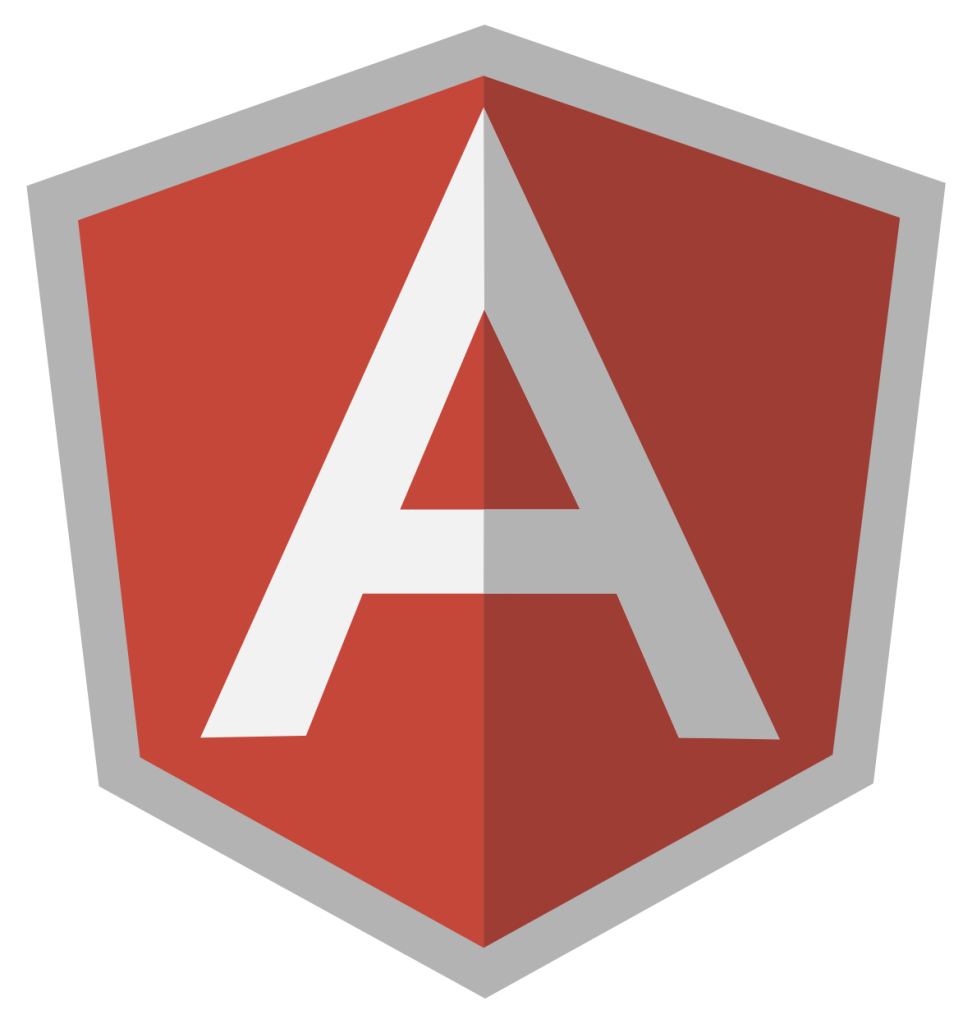jQuery vs. Angular: A Comparative Analysis for Developers
In the ever-evolving world of web development, choosing the right technology stack is essential for building successful and efficient applications. Among the many options available, jQuery and Angular stand out as popular choices for developers. jQuery is a lightweight JavaScript library, while Angular is a comprehensive front-end framework developed and maintained by Google. In this comparative analysis, we explore the key differences and strengths of jQuery and Angular, helping developers make informed decisions based on their project requirements and development goals. Whether you seek simplicity and cross-browser compatibility or a powerful, feature-rich framework for modern web applications, this analysis will shed light on the strengths and use cases of both jQuery and Angular.
JQuery
jQuery is a lightweight, fast, and feature-rich JavaScript library designed to simplify and streamline client-side web development. It provides a simple and concise syntax that allows developers to perform various tasks more efficiently, such as DOM manipulation, event handling, and AJAX interactions.
Here are the key concepts and features of jQuery:
- DOM Manipulation:
- jQuery simplifies DOM manipulation tasks, allowing developers to select, traverse, and manipulate HTML elements with ease. Its CSS-like selectors enable targeted selection of elements based on class, ID, attributes, or other criteria.
- Event Handling:
- jQuery provides convenient methods to attach event handlers to HTML elements. Developers can easily respond to user interactions, such as clicks, keypresses, and form submissions, by binding event handlers to the selected elements.
- AJAX Support:
- jQuery simplifies asynchronous data exchange with the server using AJAX (Asynchronous JavaScript and XML). Developers can make HTTP requests, retrieve data, and update the page content without requiring a page refresh.
- Animation Effects:
- jQuery offers a wide range of animation effects, allowing smooth transitions, fades, and movements of HTML elements. Animation functions can be easily applied to elements to create engaging user experiences.
- Chaining Methods:
- jQuery leverages method chaining, enabling developers to apply multiple actions on the same set of elements in a single line of code. This concise syntax streamlines code readability and reduces redundant DOM traversals.
- Cross-Browser Compatibility:
- jQuery abstracts browser-specific quirks and inconsistencies, providing a consistent and reliable experience across different web browsers.
- Extensive Plugin Ecosystem:
- jQuery has a vast ecosystem of plugins created by the community, offering additional functionality like date pickers, sliders, and various UI components. Developers can easily integrate these plugins into their projects.
- Document Ready Function:
- The
$(document).ready()function ensures that code inside it is executed only when the HTML document has fully loaded, preventing script execution before the page is ready.
- The
- Ajax Helpers:
- jQuery includes helper methods like
$.ajax()and$.getJSON()that simplify the process of making AJAX requests and handling responses.
- jQuery includes helper methods like
- Event Delegation:
- jQuery supports event delegation, which allows event handlers to be attached to parent elements to handle events triggered by their child elements. This approach improves performance by reducing the number of event bindings.
jQuery’s simplicity and versatility have made it widely adopted in web development projects. Its easy-to-learn syntax, extensive documentation, and active community support make it an excellent choice for developers seeking to enhance interactivity and user experience in their web applications.
Below, we present the pros and cons of using jQuery:
| Pros of jQuery | Cons of jQuery |
|---|---|
| 1. Easy to Learn and Use | 1. Performance Overhead: While jQuery is fast, it adds a layer of abstraction that may cause some performance overhead compared to native JavaScript. |
| 2. Cross-Browser Compatibility | 2. Large File Size: The entire jQuery library may be unnecessary for smaller projects, leading to larger file sizes and longer loading times. |
| 3. DOM Manipulation Simplification | 3. Dependency on JavaScript: While jQuery abstracts JavaScript complexity, it also relies on the presence of JavaScript to work, which could be a concern for users with JavaScript disabled. |
| 4. Event Handling | 4. Learning Curve for Advanced Features: While jQuery basics are easy to learn, mastering its more advanced features and plugins may require additional time and effort. |
| 5. AJAX Support | 5. Not Suitable for Modern Web Applications: For complex, single-page applications, more comprehensive frameworks like Angular or React may be more suitable. |
| 6. Extensive Plugin Ecosystem | 6. Limited Templating Capabilities: jQuery lacks built-in templating capabilities found in modern frameworks. |
| 7. Simplified Animation | 7. Maintenance Overhead: As browsers evolve, jQuery may require updates to remain compatible, leading to maintenance overhead. |
| 8. Community Support | |
| 9. Legacy Support |
Overall, jQuery is an excellent choice for projects with simple interactivity and where rapid development is crucial. It remains popular for its ease of use and cross-browser compatibility. However, for complex, modern web applications, developers might consider more comprehensive frameworks like Angular, React, or Vue.js. Understanding the strengths and limitations of jQuery allows developers to make informed decisions based on their specific project requirements and goals.
Angular
Angular is a powerful front-end framework for building dynamic and feature-rich web applications. Developed and maintained by Google, it is written in TypeScript, a superset of JavaScript, and provides a robust and structured environment for developing complex single-page applications (SPAs). Angular follows the Model-View-Controller (MVC) architecture, where the application logic is organized into separate components, making it highly maintainable and scalable.
Key Concepts and Features of Angular:
- Component-Based Architecture: Angular revolves around the concept of components, which are self-contained units responsible for handling specific parts of the user interface and logic. Components can communicate with each other through a well-defined API, enhancing code reusability and modularity.
- Templates and Data Binding: Angular’s templates use declarative syntax to describe the user interface. Two-way data binding allows automatic synchronization between the data model and the view, making it easy to keep the UI in sync with the application state.
- Dependency Injection: Angular’s dependency injection system helps manage component dependencies and facilitates testing by allowing mock dependencies during unit testing.
- Directives: Directives enable developers to extend HTML with custom behavior. Angular comes with built-in directives like ngIf, ngFor, and ngSwitch, while developers can create their own custom directives for specific use cases.
- Routing: Angular provides a powerful routing mechanism that enables developers to create SPAs with multiple views. The router allows defining routes, handling navigation, and loading specific components based on the route.
- Forms and Validation: Angular offers extensive support for building forms and performing client-side validation. Developers can create complex forms with ease, handle user input, and implement custom validation logic.
- HTTP Client: Angular’s built-in HTTP client simplifies making HTTP requests to backend services, allowing seamless integration with APIs and handling data exchange between the client and server.
- Testing Support: Angular is designed with testability in mind. It comes with tools like TestBed and Karma that facilitate unit testing and end-to-end testing of Angular applications.
Here’s a table summarizing the pros and cons of Angular:
| Pros of Angular | Cons of Angular |
|---|---|
| 1. Comprehensive and Powerful Framework | 1. Steeper Learning Curve |
| 2. Robust Architecture with Component-Based Approach | 2. Larger Bundle Size |
| 3. Strongly Typed with TypeScript | 3. Frequent Updates and Breaking Changes |
| 4. Two-Way Data Binding and Templates | 4. Performance Overhead for Smaller Projects |
| 5. Powerful Routing and Navigation Features | 5. Initial Setup and Configuration Complexity |
| 6. Extensive Tooling and Rich Ecosystem | 6. Overkill for Simple Projects |
| 7. Active Community Support and Regular Updates | 7. Dependency on Google and Angular Ecosystem |
| 8. Built-in Form Handling and Validation |
It’s important to note that while Angular provides numerous features and powerful capabilities, it might not be the best choice for every project. Developers should carefully consider project requirements, team expertise, and scalability needs before deciding to use Angular. For smaller projects or projects with minimal complexity, other options like jQuery or simpler frameworks might be more appropriate.
Use Cases and Project Suitability
jQuery’s versatility makes it suitable for various use cases and projects. However, its strengths and limitations should be considered when choosing it for specific tasks. Let’s explore some common use cases and the project suitability for jQuery:
- Small to Medium-Sized Websites:
- jQuery is an excellent choice for small to medium-sized websites that require simple interactivity and dynamic content. Its compact size and cross-browser compatibility make it ideal for adding enhancements to static HTML pages.
- Rapid Prototyping and Proof of Concepts:
- For rapid prototyping or creating proof-of-concept projects, jQuery offers a quick and efficient way to add basic interactions without the overhead of more complex frameworks.
- Legacy Projects:
- jQuery remains relevant in legacy projects built before the emergence of modern front-end frameworks. It allows developers to maintain and enhance these projects without rewriting them entirely.
- Front-end Enhancement of CMS-Based Websites:
- Many Content Management Systems (CMS) integrate well with jQuery, making it a popular choice for front-end enhancements of CMS-based websites. Developers can easily extend the CMS-generated pages with custom interactions.
- Web Animations and Effects:
- jQuery’s animation capabilities are useful for creating eye-catching effects and animations. It simplifies the process of adding subtle transitions or dynamic elements to websites.
- Form Handling and Validation:
- jQuery’s form handling and validation features are handy for improving user interactions with web forms. Developers can easily validate user inputs and provide feedback without the need for server-side processing.
- Cross-Browser Compatibility:
- Projects that require consistent behavior across different browsers can benefit from jQuery’s abstraction of browser-specific quirks.
However, while jQuery is a popular choice for many projects, it may not be the best fit for all scenarios:
- Large and Complex Single-Page Applications (SPAs):
- For large-scale SPAs with complex data handling and extensive interactivity, more robust and comprehensive frameworks like Angular, React, or Vue.js are better suited.
- Dependency on JavaScript-Disabled Environments:
- jQuery relies on JavaScript for its functionality, which might not be suitable for projects that require full functionality even in JavaScript-disabled environments.
- Performance-Critical Applications:
- For performance-critical applications, especially those targeting mobile devices, a lighter JavaScript solution or custom optimizations might be more appropriate.
- Modern Front-end Development Practices:
- In projects where a more structured and modular approach is desired, modern JavaScript frameworks provide better support for components, state management, and modular code organization.
In summary, jQuery’s ease of use, cross-browser compatibility, and extensive plugin ecosystem make it an excellent choice for small to medium-sized projects, prototyping, and legacy systems. It remains a valuable tool for web developers seeking to enhance user interactions and create dynamic web experiences.
However, for more extensive and complex applications that demand a structured and scalable approach, developers may consider leveraging modern front-end frameworks like Angular, React, or Vue.js. The decision to use jQuery or explore alternative frameworks ultimately depends on the specific requirements, scale, and scope of the project at hand.
jQuery vs. Angular: A Comparison of Key Features and Capabilities
Here’s a comparison table highlighting the main differences between jQuery and Angular:
| Feature | jQuery | Angular |
|---|---|---|
| Type | JavaScript library | Front-end framework |
| Purpose | DOM manipulation and interactions | Building complex, feature-rich SPAs |
| Architecture | No specific architecture | Follows Model-View-Controller (MVC) architecture |
| Learning Curve | Easy to learn and use | Steeper learning curve |
| Two-Way Data Binding | Limited support | Built-in support for two-way data binding |
| Templating | Limited templating capabilities | Powerful and flexible templating system |
| Component-Based Approach | No native support | Built-in support for component-based architecture |
| AJAX and HTTP Support | Supported through helper methods | Built-in support with Angular HTTP client |
| Cross-Browser Compatibility | Excellent | Excellent |
| Ecosystem and Plugins | Vast ecosystem with numerous plugins | Growing ecosystem with Angular-specific packages |
| Project Size | Suitable for small to medium-sized projects | Suitable for large-scale, complex SPAs |
In summary, jQuery is a lightweight JavaScript library that simplifies DOM manipulation and provides cross-browser compatibility. It is suitable for smaller projects and quick prototyping. On the other hand, Angular is a comprehensive front-end framework designed for building large-scale, feature-rich single-page applications (SPAs). It follows the MVC architecture, has powerful data binding and templating capabilities, and supports component-based development. While jQuery remains valuable for certain use cases, Angular is a more suitable choice for complex projects that require scalability and structure.
jQuery & Angular: Finding the Right Fit for Your Web App Development
The choice between jQuery and Angular for web app development depends on the specific requirements, complexity, and goals of your project. Let’s elaborate on when each option might be more suitable by providing examples:
- jQuery for Simple and Lightweight Interactions: If you are building a small to medium-sized website with straightforward interactions, jQuery might be the preferred choice. It is excellent for enhancing user experience with simple animations, form validations, and dynamic content without the need for extensive setup or a steep learning curve. For example:
- A personal portfolio website with smooth scrolling to sections, animated transitions, and a basic contact form validation.
- A small e-commerce site with interactive product image zoom, dynamic cart updates, and a simple image slider for product galleries.
- Angular for Complex Single-Page Applications (SPAs): Angular is well-suited for developing large-scale, feature-rich SPAs with complex data handling and user interactions. If your project requires real-time updates, a structured architecture, and seamless data synchronization, Angular is a powerful choice. Examples include:
- A collaborative project management tool with real-time updates on task statuses, drag-and-drop task management, and interactive charts for project analytics.
- An e-learning platform with a complex user dashboard, interactive quizzes, and a dynamic content display based on user preferences.
- Compatibility and Modern Front-end Development: If cross-browser compatibility is a significant concern, jQuery’s widespread support might be advantageous. Additionally, if your project is a legacy system or requires minor enhancements to an existing CMS-based website, jQuery can quickly provide the necessary interactions. For instance:
- A legacy web application that requires adding a date picker and some simple form validation to improve the user experience.
- A WordPress-based blog that needs a responsive menu, smooth scrolling, and some basic animations.
- Mobile and Performance Considerations: If your web app targets mobile users, especially in areas with limited network connectivity, a lightweight solution like jQuery may be preferable. However, for performance-critical applications with extensive data handling and rendering requirements, Angular’s optimized architecture and dependency injection can provide better performance. For example:
- A mobile-first, one-page landing page with smooth animations and fast loading times for optimal mobile user experience.
- A real-time dashboard displaying live data updates and interactive visualizations for data analysis.
Ultimately, the decision between jQuery and Angular depends on your project’s specific needs, the scope of interactivity required, and the expertise of your development team. For smaller projects with straightforward interactions, jQuery offers a quick and efficient solution. In contrast, Angular’s power and scalability shine in complex, modern web applications where performance, structure, and seamless user experience are essential. Assessing your project’s requirements and evaluating the strengths of each option will guide you towards the most suitable choice for your web app development.
Wrapping Up
In conclusion, deciding between jQuery and Angular for web app development depends on the nature and scale of your project. jQuery remains a lightweight and versatile option for smaller websites, prototyping, and simple interactions. It excels in providing cross-browser compatibility and rapid development of basic features.
On the other hand, Angular is a powerful front-end framework suited for building large and complex single-page applications. With its strong architecture, component-based approach, and robust data binding capabilities, Angular offers scalability, maintainability, and a structured development environment.
When making your choice, consider the project’s requirements, desired features, and your development team’s expertise. For small projects and quick enhancements, jQuery might be the more straightforward option. However, if you aim to build a sophisticated, modern, and scalable web application, Angular’s comprehensive features and powerful capabilities make it a compelling choice. Ultimately, understanding your project’s needs will lead you to the most appropriate framework for your web app development journey.




